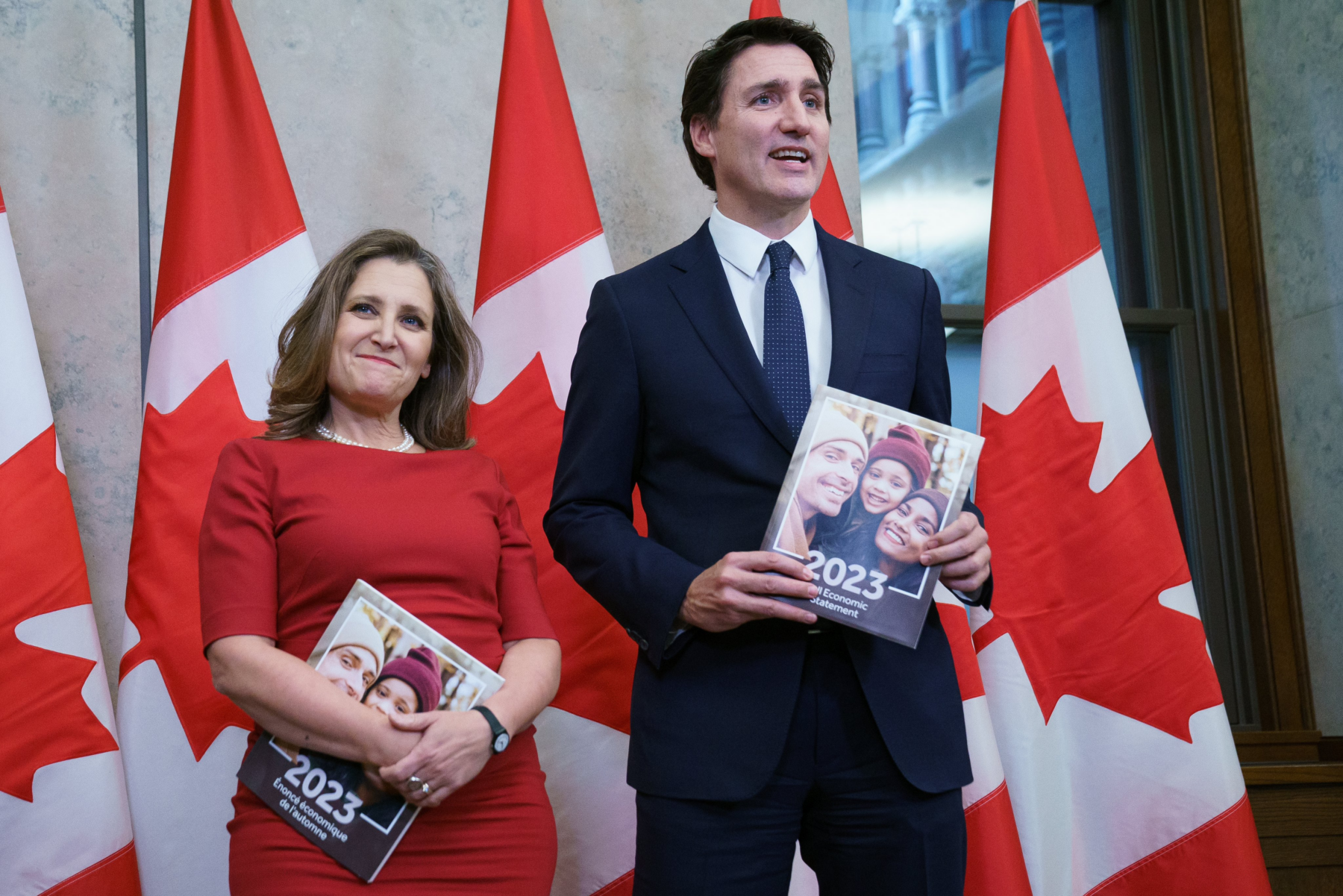Fall Economic Statement: What builders need to know
Ottawa plans to spend billions on addressing the nation’s affordable housing crisis.

Finance Minister Chrystia Freeland delivers Canada’s Fall Economic Statement. – Government of Canada
Home construction was front and centre for this year’s Fall Economic Statement.
Chrystia Freeland, deputy prime minister and the minister of finance, explained that the Economic Statement is focused on two key challenges, the rising cost of living and building affordable housing.
For the latter, the federal government is introducing billions of dollars in new financing to speed home building, crack down on short-term rentals and increase the number of construction workers.
“Our economic plan is about building a strong economy that works for everyone, and this Fall Economic Statement is the next phase of our plan,” said Freeland. “With a focus on supporting the middle class and building more homes, faster, we are taking action on the priorities that matter most to Canadians today—and we will continue doing everything we can to deliver for Canadians from coast to coast to coast.”
The document contains detailed information on Canada’s Housing Action Plan, which is divided into several key areas:
Building More Homes Faster
This section discusses various strategies to accelerate housing construction. Key initiatives include:
- Accelerating how communities build housing.
- Leveraging federal funding to build more homes.
- Removing the Goods and Services Tax (GST) from new co-operative rental housing to reduce costs and encourage more development.
- Providing more financing for apartment construction to address the demand for multi-family housing.
- Building more affordable housing, addressing the critical need for housing that is financially accessible to a broader range of people.
- Unlocking $20 billion in low-cost rental financing, which would make it easier to finance rental housing projects.
- Speeding up financing approvals to expedite the process of building more homes.
- Repurposing more federal lands for housing, which involves using government-owned land for residential development.
- Strengthening the Co-operative Housing Development Program to support more collaborative, community-driven housing solutions.
- Leveraging the Canada Infrastructure Bank to support more housing, using this entity to finance large-scale infrastructure projects, including housing.
- Providing an update on Indigenous housing and the Urban, Rural, and Northern Indigenous Housing Strategy.
- Establishing the Department of Housing Infrastructure and Communities to oversee and streamline housing-related initiatives.
More Construction Workers to Build More Homes
This part focuses on workforce development in the construction sector. It includes:
- Breaking down barriers to internal labor mobility, making it easier for construction workers to move and work across different regions.
- Prioritizing construction workers for permanent residency, recognizing the critical role they play in addressing Canada’s housing needs.
Supporting Renters, Buyers, and Homeowners
This section addresses various measures to support different stakeholders in the housing market. Key points include:
- Cracking down on non-compliant short-term rentals, which can impact the availability of long-term rental housing.
- Introducing the New Canadian Mortgage Charter, aimed at protecting and supporting homebuyers.
- Housing international students and protecting them from fraud, ensuring they have access to safe and reliable housing options
The Residential Construction Council of Ontario (RESCON) stated that while the measures are a step in the right direction towards tackling the housing crisis, the federal government can and must do more.
“Billion-dollar fixes are being proposed, but the housing supply crisis and affordability issue is a trillion-dollar problem, as noted by the CMHC,” said RESCON president Richard Lyall. “We are encouraged that housing is a main focus of the feds but there are still many impediments that were not addressed such as the enormous infrastructure funding gap faced by municipalities that impedes new home construction.
We need a Marshall plan-styled strategy with respect to the chronic housing supply shortfall.
RESCON President Richard Lyall
RESCON was pleased the government announced $15 billion in new loan funding for builders of rental properties and $1 billion to support the building of affordable housing, as well as a mortgage charter that will clarify rules for homeowners who are facing renewals and ensure that lenders have appropriate mortgage relief policies in place for consumers facing hardship.
But Lyall argued that many impediments to housing construction were not addressed, such as reducing taxes associated with purchasing a home and the long approvals process that builders must endure when starting a project.
“Without tackling these issues, and the huge infrastructure funding gap being faced by municipalities, the housing problem will not be solved,” he said. “Municipalities are in a challenging position and the feds must pick up the slack by funding the necessary public infrastructure to support housing.”

